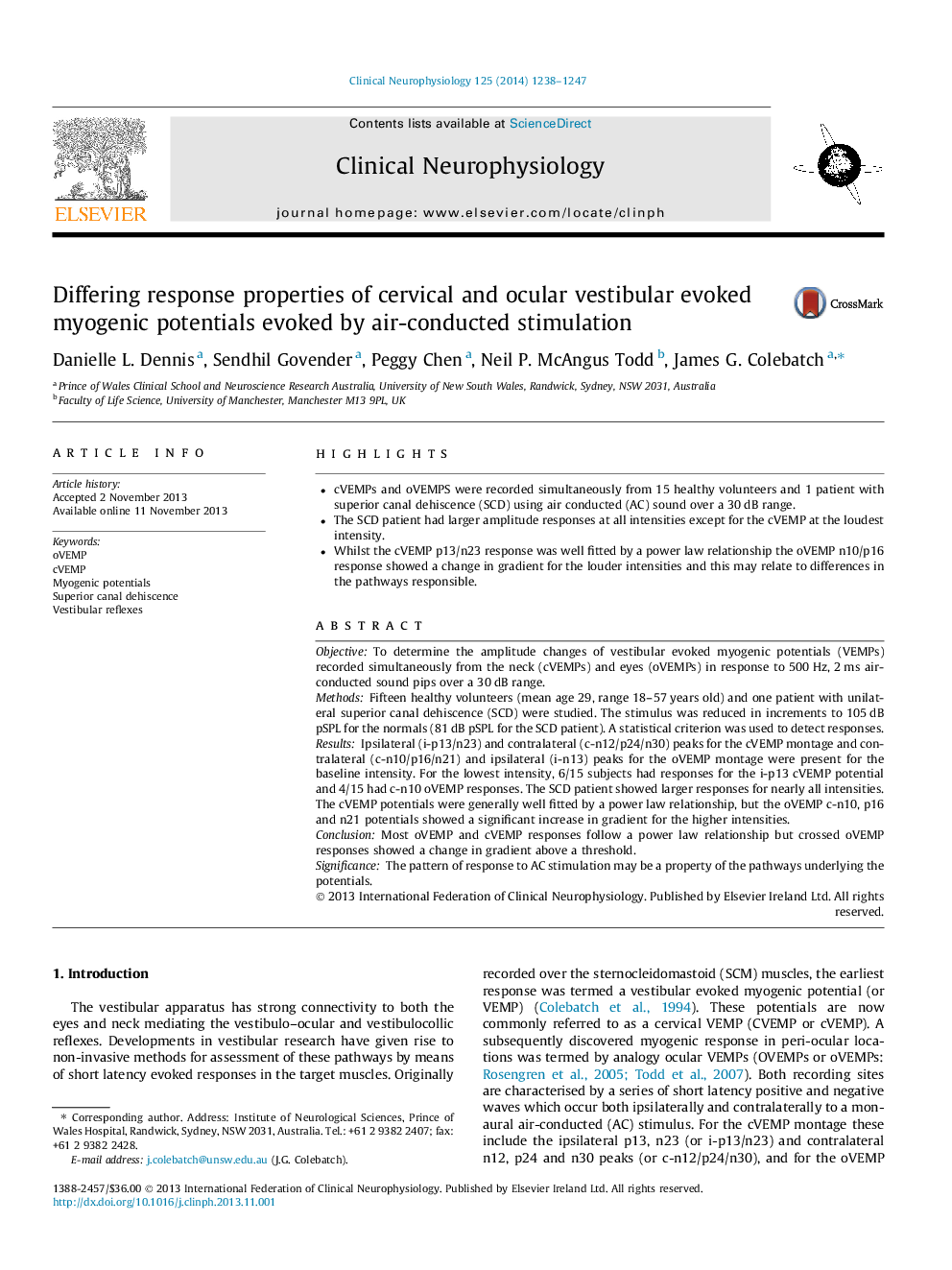| کد مقاله | کد نشریه | سال انتشار | مقاله انگلیسی | نسخه تمام متن |
|---|---|---|---|---|
| 6008541 | 1184970 | 2014 | 10 صفحه PDF | دانلود رایگان |
- cVEMPs and oVEMPS were recorded simultaneously from 15 healthy volunteers and 1 patient with superior canal dehiscence (SCD) using air conducted (AC) sound over a 30Â dB range.
- The SCD patient had larger amplitude responses at all intensities except for the cVEMP at the loudest intensity.
- Whilst the cVEMP p13/n23 response was well fitted by a power law relationship the oVEMP n10/p16 response showed a change in gradient for the louder intensities and this may relate to differences in the pathways responsible.
ObjectiveTo determine the amplitude changes of vestibular evoked myogenic potentials (VEMPs) recorded simultaneously from the neck (cVEMPs) and eyes (oVEMPs) in response to 500Â Hz, 2Â ms air-conducted sound pips over a 30Â dB range.MethodsFifteen healthy volunteers (mean age 29, range 18-57Â years old) and one patient with unilateral superior canal dehiscence (SCD) were studied. The stimulus was reduced in increments to 105Â dB pSPL for the normals (81Â dB pSPL for the SCD patient). A statistical criterion was used to detect responses.ResultsIpsilateral (i-p13/n23) and contralateral (c-n12/p24/n30) peaks for the cVEMP montage and contralateral (c-n10/p16/n21) and ipsilateral (i-n13) peaks for the oVEMP montage were present for the baseline intensity. For the lowest intensity, 6/15 subjects had responses for the i-p13 cVEMP potential and 4/15 had c-n10 oVEMP responses. The SCD patient showed larger responses for nearly all intensities. The cVEMP potentials were generally well fitted by a power law relationship, but the oVEMP c-n10, p16 and n21 potentials showed a significant increase in gradient for the higher intensities.ConclusionMost oVEMP and cVEMP responses follow a power law relationship but crossed oVEMP responses showed a change in gradient above a threshold.SignificanceThe pattern of response to AC stimulation may be a property of the pathways underlying the potentials.
Journal: Clinical Neurophysiology - Volume 125, Issue 6, June 2014, Pages 1238-1247
